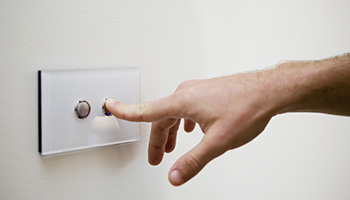Electricity is something we often don’t pay attention to when it’s working, however it’s important to know how to stay safe and when to take action.
Shocks and tingles
If you experience a shock, zap or tingling sensation when touching electrical appliances or metal surfaces such as taps, sinks and showers it could indicate an electrical fault. No matter how minor, if you feel this sensation:
Call us immediately on 13 10 93 to report it.
Don’t touch the appliance or location again until confirmed safe.
We will take immediate action to make sure it is safe, and the appropriate authority will investigate the cause.
General safety tips
Check cords are in good condition and replace any that are brittle or frayed.
Do not overload individual power points or a double adaptor — use a suitable adaptor board instead.
Keep all electrical connections and portable appliances out of areas that may become wet.
Most homes will have a safety switch installed to reduce the risk of electric shock and fire in your home. If there is no permanently installed safety switch, use a portable type of power point (this needs to be installed by a licensed electrician).
Keep heater grilles and vents or reflectors angled upwards and free from dust to improve efficiency and reduce overheating.
Only use earthed power points and an extension cord for electric lawnmowers, trimmers, and power tools.
Never place metal ladders or other metal objects on power or extension cords, and never use them to change light bulbs while supply is on.
Never join one set of decorative lights onto the end of another set of lights.
Never use 240-volt lighting on tinsel Christmas trees.
Electric Vehicle charging
When charging your electric vehicle at home or work – it should be treated like an appliance, and you should follow the same safety standards.
Make sure chargers are installed and maintained by an authorised installer/repairer.
Only use extension leads and power sockets that are specifically intended for charging your electric vehicle model, and do not attempt to charge using any household adaptor.
Be cautious when charging in wet weather, and especially during electrical storms.
Do not use damaged or faulty charging equipment and always get your manufacturer to check equipment.
Never attempt to modify charging equipment or use equipment that has undergone alterations.
Damaged point of attachment
The point of attachment (POA) is the point or points where overhead powerlines connect to your home or business. The POA determines the point at which there is a cross over from the Evoenergy electricity network, to your own internal electrical works.
We can legally only undertake works on assets considered part of our energy network. This means damage to anything past our network boundary, must be undertaken by a private electrical contractor.
If you do call Evoenergy to take a look at your damaged POA, our crews will ensure safety of the distribution network, however we cannot replace or repair any equipment on which is part of your homes internal electrical works.

